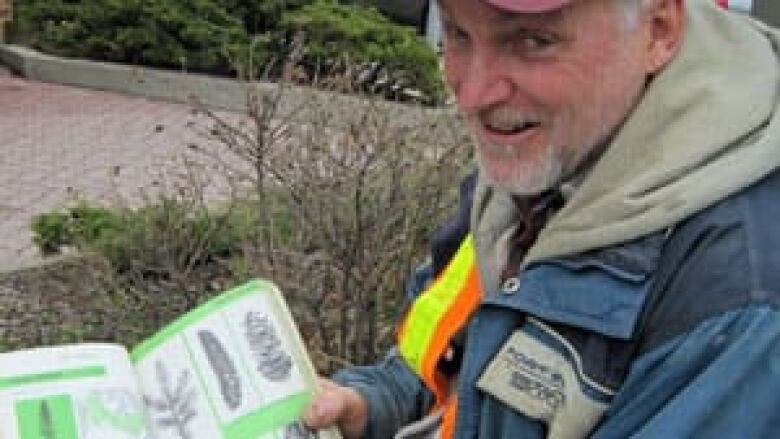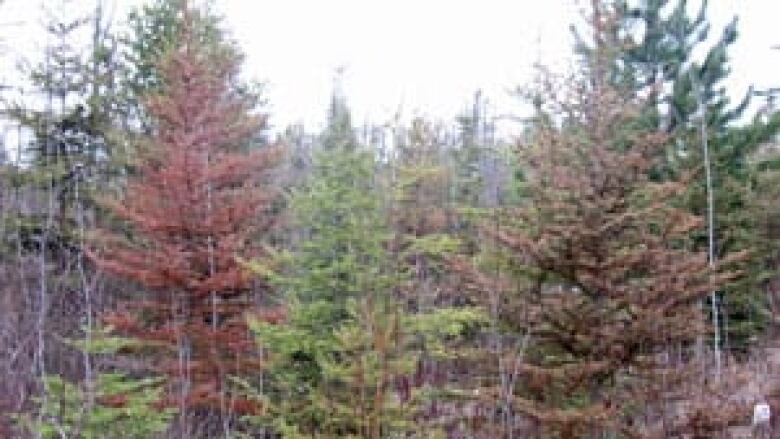Appearance of 'dry, dead' trees alarms residents
Ministry says trees are suffering from 'winter browning,' but should recover
People in the Thunder Bay area are wondering why so many white spruce trees are turning brown or red.
Richard Lane, who lives in Lybster Township, said his trees look like they're dying.

"Well it's not on my property alone," he said. "I've talked to neighbours and they said the same thing. That it's all up and down the highways as far as they can see."
The Ministry of Natural Resources reported Marchs abnormally high temperatures affected white spruce, black spruce, jack pine, balsam fir and red pines in much of the northwest. The trees lost moisture and their needles died.
But ministry forestry expert Taylor Scarrsaid the damage is likely temporary. "The buds on those trees look like they're still alive,"he said. "So we expect the trees will recover from ... losing their needles."
Lane was worried the situation could be dangerous.
"There's going to be a problem with fire in the future because there [are] so many dead trees in the bush dry, dead trees,"he said.

Scarr,based in Sault Ste. Marie, said the Ministry is monitoring the fire hazard posed by dead needles.
Hesaid the Ministry of Natural Resources is doing some surveys to determine how big the affected area is, but so far they've observed the problem from Geraldton and Nipigon to Thunder Bay and Shebandowan.
He noted that the red-brown trees have suffered what iscalled "winter browning" and the Ministry has seen it before.
Scarr said it happened in 2007 in northeastern Ontario and affected about 340,000 hectares. He said the needles dropped off, the buds grew and produced new needles. By the following year, the trees looked fine.












_(720p).jpg)


 OFFICIAL HD MUSIC VIDEO.jpg)
.jpg)



























































































